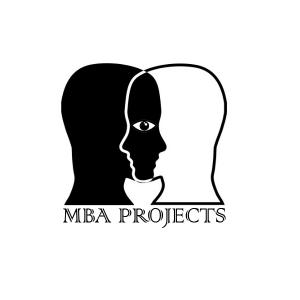How to Effectively Use Graphs, Tables, and Visual Data in Your MBA Dissertation
How to Effectively Use Graphs, Tables, and Visual Data in Your MBA Dissertation
How to Effectively Use Graphs, Tables, and Visual Data in Your MBA Dissertation. In an MBA dissertation, presenting data effectively is essential for clarity and credibility. Graphs, tables, and other visual data enhance comprehension, making it easier for readers to analyze trends and patterns. This article delves into the best practices for incorporating visual representations in your dissertation, ensuring they add value to your research and contribute to a higher academic standard.
Why Visual Data Matters in an MBA Dissertation
Effective data presentation is not just about aesthetics; it plays a crucial role in communicating complex information concisely. Visual elements:
- Improve data readability and comprehension
- Highlight key findings and trends
- Enhance credibility by supporting arguments with quantitative evidence
- Make the dissertation more engaging and professional
Choosing the Right Type of Visual Representation
Selecting the right visual representation depends on the nature of your data and the message you want to convey. Here are some of the most effective ways to integrate visual elements into your MBA dissertation.
1. Graphs: Presenting Trends and Comparisons
Graphs help illustrate patterns, relationships, and trends in data. Choosing the right graph depends on the type of data you are working with.
Line Graphs: Ideal for Trend Analysis
Line graphs are perfect for showing changes over time. If your MBA dissertation includes time-series data—such as sales growth, market trends, or financial fluctuations—line graphs will help visualize how variables change.
Bar Graphs: Best for Comparisons
Bar graphs are useful for comparing different categories. If you need to contrast market shares, revenue figures, or customer satisfaction levels across different entities, bar graphs provide an easy-to-understand representation.
Pie Charts: Effective for Proportions
Pie charts work well when you need to illustrate percentage distributions. Use them sparingly to avoid clutter, and ensure each segment is clearly labeled to maintain readability.
2. Tables: Displaying Precise Data
Tables are essential when you need to present detailed numerical data in an organized manner. Unlike graphs, which provide a visual overview, tables allow readers to analyze exact figures.
Best Practices for Using Tables:
- Keep them concise and well-structured
- Use clear headings for each column and row
- Highlight key values using bold formatting
- Avoid excessive data—focus only on relevant information
3. Infographics: Enhancing Data Storytelling
Infographics are a powerful tool for presenting complex information in a visually appealing way. If your MBA dissertation includes case studies, strategic frameworks, or marketing insights, infographics can break down key takeaways into digestible visuals.
Key Elements of a Good Infographic:
- Use icons, shapes, and colors to categorize information
- Keep the design clean and professional
- Maintain consistent fonts and formatting for readability
How to Integrate Visuals Effectively in Your Dissertation
Simply adding graphs and tables is not enough; you need to integrate them strategically within your dissertation. Follow these best practices to maximize their impact:
1. Ensure Relevance
Each visual should serve a clear purpose. Avoid adding graphs or tables that do not directly contribute to your analysis. Every visual should support your argument or finding.
2. Label and Cite Data Sources
All visuals must be properly labeled with a figure number and a descriptive title. For example:
Figure 1: Annual Revenue Growth of Company X (2015-2023)
Additionally, cite data sources below the visual using an appropriate referencing style (e.g., APA, Harvard, or Chicago).
3. Provide Context for Every Visual
Introduce each visual before presenting it. Explain why it is included and discuss its significance. After the visual, provide an analysis or interpretation of the data. For example:
“As shown in Figure 1, Company X experienced a consistent 12% revenue growth from 2015 to 2023, indicating a strong market presence.”
4. Maintain Consistency in Formatting
Your dissertation should have a consistent visual style. Maintain uniformity in:
- Font size and style for titles and labels
- Color schemes across all visuals
- Graph and table alignment with the main text
5. Use High-Quality Images and Graphs
Low-resolution images can make your dissertation look unprofessional. Ensure all graphs and visuals are in high resolution (300 dpi or higher). Use software like Excel, Tableau, or Python (Matplotlib, Seaborn) to generate professional-quality visuals.
Common Mistakes to Avoid
Even well-intentioned visuals can backfire if not used correctly. Avoid these common mistakes:
- Overloading with too many visuals – Use only essential graphs and tables to prevent clutter.
- Misleading representations – Ensure scales, axes, and data proportions are accurate.
- Unlabeled figures – Every visual should have a clear title and description.
- Lack of analysis – Do not just present visuals; interpret them for the reader.
Conclusion
Effectively using graphs, tables, and visual data in your MBA dissertation can significantly improve clarity, credibility, and reader engagement. By selecting the right types of visuals, integrating them strategically, and following best practices, you can ensure your dissertation presents data in a compelling and professional manner.
Thank you for reading our Blog “How to Effectively Use Graphs Tables and Visual Data in Your MBA Dissertation”.
Also, read our more BLOG here.
For Order “MBA Projects” feel free to contact us at Mob: Call / WhatsApp: +91.8013000664 || Email: info@mbaprojects.net.in






